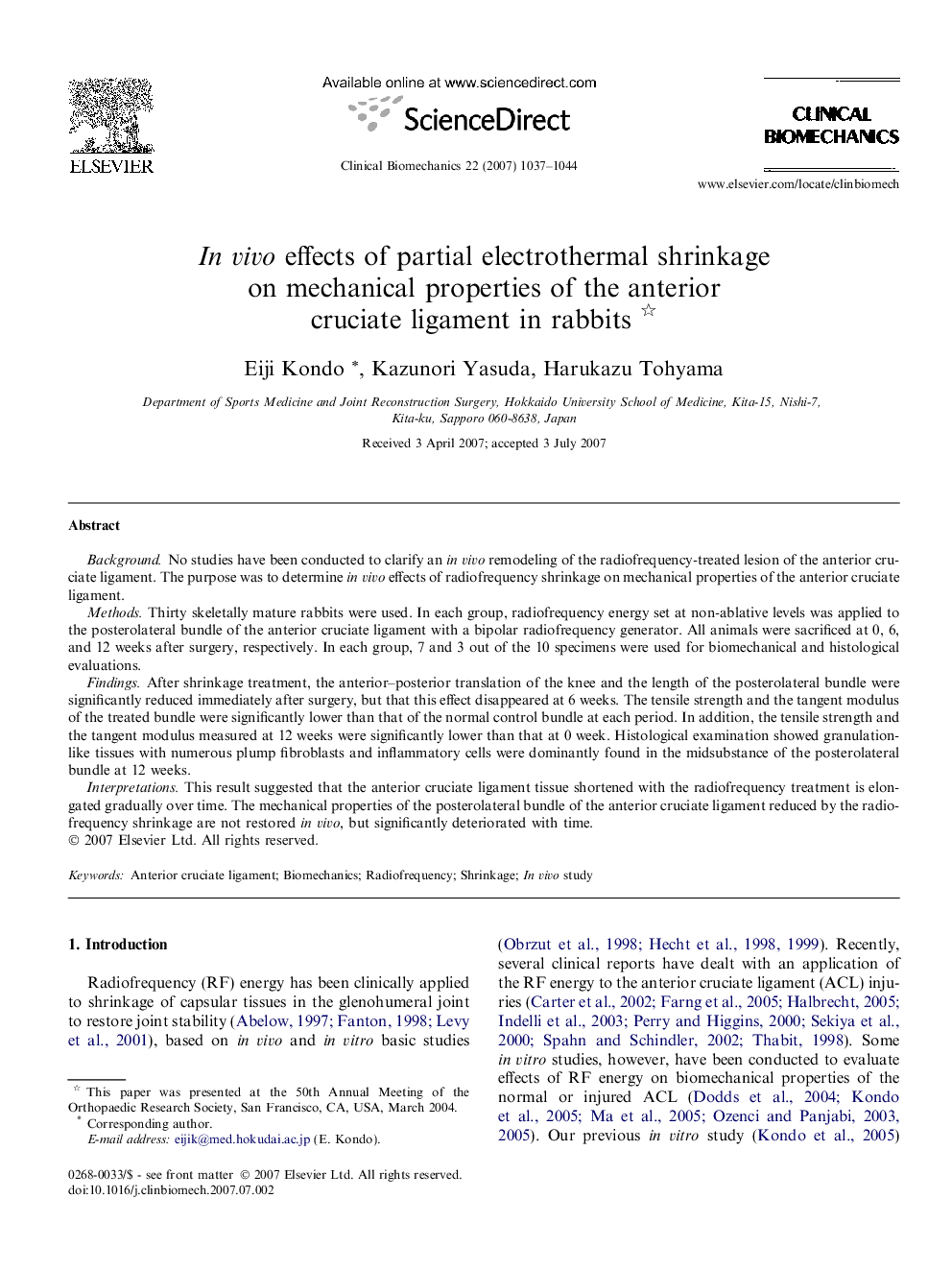| Article ID | Journal | Published Year | Pages | File Type |
|---|---|---|---|---|
| 4051226 | Clinical Biomechanics | 2007 | 8 Pages |
BackgroundNo studies have been conducted to clarify an in vivo remodeling of the radiofrequency-treated lesion of the anterior cruciate ligament. The purpose was to determine in vivo effects of radiofrequency shrinkage on mechanical properties of the anterior cruciate ligament.MethodsThirty skeletally mature rabbits were used. In each group, radiofrequency energy set at non-ablative levels was applied to the posterolateral bundle of the anterior cruciate ligament with a bipolar radiofrequency generator. All animals were sacrificed at 0, 6, and 12 weeks after surgery, respectively. In each group, 7 and 3 out of the 10 specimens were used for biomechanical and histological evaluations.FindingsAfter shrinkage treatment, the anterior–posterior translation of the knee and the length of the posterolateral bundle were significantly reduced immediately after surgery, but that this effect disappeared at 6 weeks. The tensile strength and the tangent modulus of the treated bundle were significantly lower than that of the normal control bundle at each period. In addition, the tensile strength and the tangent modulus measured at 12 weeks were significantly lower than that at 0 week. Histological examination showed granulation-like tissues with numerous plump fibroblasts and inflammatory cells were dominantly found in the midsubstance of the posterolateral bundle at 12 weeks.InterpretationsThis result suggested that the anterior cruciate ligament tissue shortened with the radiofrequency treatment is elongated gradually over time. The mechanical properties of the posterolateral bundle of the anterior cruciate ligament reduced by the radiofrequency shrinkage are not restored in vivo, but significantly deteriorated with time.
